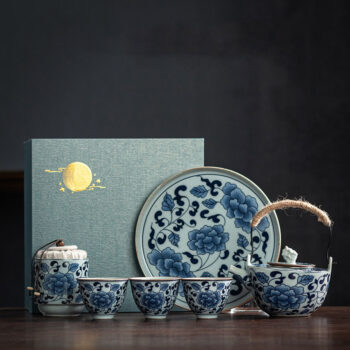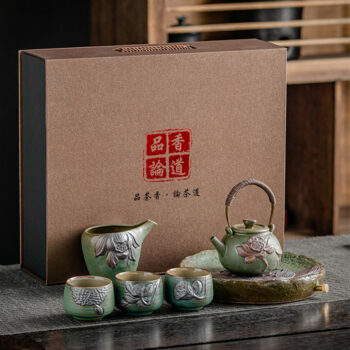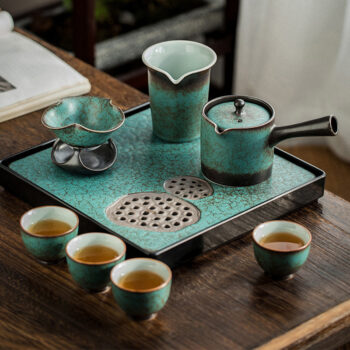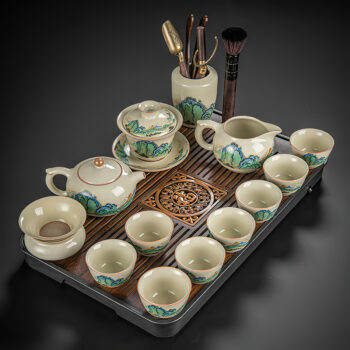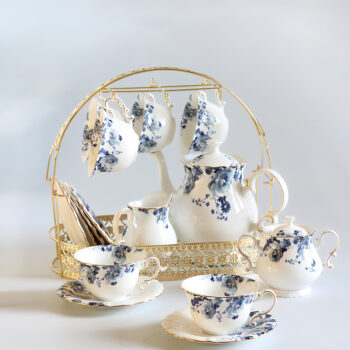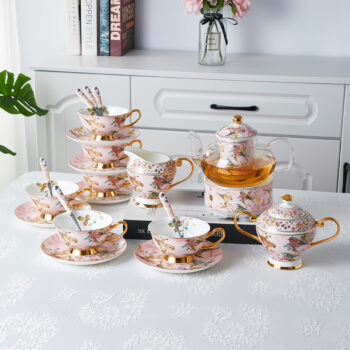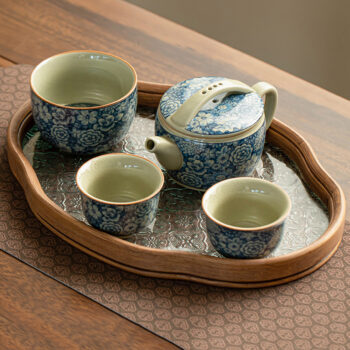Japanese Tea Sets
-
 Select options This product has multiple variants. The options may be chosen on the product page Quick View
Select options This product has multiple variants. The options may be chosen on the product page Quick View


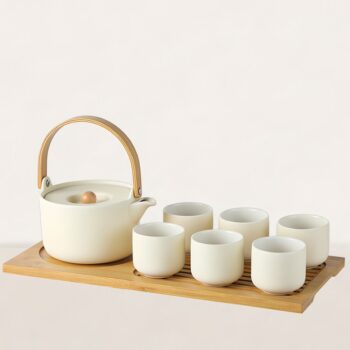 Japanese Tea Sets
Japanese Tea SetsModern Japanese Tea Set Ceramic Teapot Cup Set with Tray
USD $119.99 – USD $134.99Select options This product has multiple variants. The options may be chosen on the product page Quick View
What Is a Japanese Tea Set Called?
More Than Just a Teapot
A Japanese tea set isn’t simply a group of teaware — it’s an invitation to slow down. Built on centuries of tradition, these sets reflect a way of life that values presence, balance, and intentional living. Whether you’re steeping sencha on a quiet morning or welcoming friends for matcha and sweets, the right tea set turns each moment into a small, peaceful ritual.
What’s Inside a Japanese Tea Set?
While styles vary, most Japanese tea sets include a few essential pieces:
- Kyusu or Side-Handle Teapot: The classic side-handle teapot is designed for easy, controlled pouring.
- Hōbin or Tilang Pot: A handle-less or straight-handled teapot used for richer brews.
- Cha Hai (Fair Cup): Used to evenly distribute tea from the pot to the cup, so each pour is consistent.
- Yunomi: Small, handle-less cups that enhance aroma and promote slow sipping.
- Drip Tray or Tea Tray: Keeps the setting neat and centred.
Each item brings form and function together, inviting a calm, deliberate pace to the tea experience.
Why Kyusu or Side-Handle Teapot Is the Star
The side-handle Kyusu is the heart of many Japanese tea sets. Its horizontal grip allows for a comfortable pour without tilting the wrist. Most designs include a built-in strainer at the spout—ideal for loose-leaf green teas like gyokuro or sencha, where clarity and timing matter. It’s simple, efficient, and beautifully intuitive.
How Japanese Tea Sets Are Used
Brewing with a Japanese tea set is more than just making tea—it’s an act of care. Here’s how it typically unfolds:
- Start with high-quality loose tea.
- Heat water and allow it to cool slightly (especially for green tea).
- Warm the teapot and cups before use.
- Add the tea leaves, pour water gently, and steep briefly.
- Use a fair cup to portion the tea equally.
This quiet process encourages mindfulness, even on the busiest of days.
How to Choose the Right Japanese Tea Set
Size and Material: Finding Your Fit
Choosing the right Japanese tea set depends on how and when you drink tea.
- Small teapots (5–12 oz) are perfect for solo sessions or focused brews.
- Clay or ceramic sets retain warmth and bring earthy charm — ideal for winter.
- Porcelain adds elegance and brightness, well-suited for gatherings or gifting.
- Each material subtly shapes the flavour and feeling of your tea.
Style That Speaks: Wabi-Sabi Aesthetics
Many Japanese tea sets are inspired by wabi-sabi, a philosophy that finds beauty in natural textures and imperfect finishes. Expect soft, muted tones, hand-glazed surfaces, and unique kiln marks. If you’re drawn to simplicity and authenticity, a wabi-sabi style set is more than decor—it becomes part of your daily rhythm.
When Design Meets Daily Use
A beautiful tea set should also be easy to live with. Look for:
- Kyusu pots with ultra-fine mesh filters
- Slender spouts for smooth, spill-free pouring
- Compact trays that frame your set and catch stray drops
These details make each tea session smooth, clean, and satisfying.
A Gift That Slows Time
A Japanese tea set makes a thoughtful gift for birthdays, housewarmings, weddings, or anyone needing a peaceful pause. It’s a way to say: take a breath, make a cup, enjoy this moment. With timeless appeal and real-world usefulness, it’s a present that lingers long after the wrapping is gone.


